Premier League clubs have unanimously agreed to semi-automated offside technology next season; system is already used in the Champions League and Serie A and was also in place at the most recent men’s and women’s World Cups
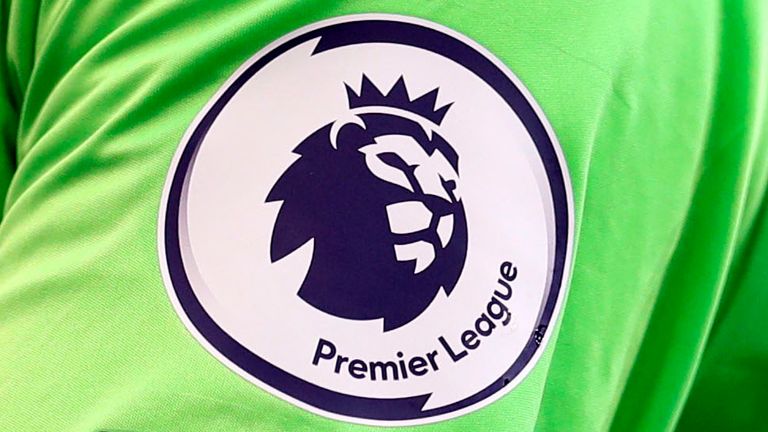
Image: The Premier League will use semi-automated offside technology (SAOT) before the end of the year.
The Premier League will use semi-automated offside technology (SAOT) before the end of the year.
Clubs unanimously agreed to introduce the technology next season at a meeting of top-flight teams on Thursday, and its implementation is expected to cut the average length of a VAR check for offside by 30 seconds.
The Premier League, which has not disclosed the technology partner it will work with, with no contracts understood to have been signed yet, said the intention was to introduce the technology after one of the autumn international breaks – as early as September or as late as November.
- Premier League fixtures – games live on Sky
- Get Sky Sports – latest offers | Stream the Premier League with NOW
- Watch Premier League highlights | Live football on Sky Sports this week
“The technology will provide quicker and consistent placement of the virtual offside line, based on optical player tracking, and will produce high-quality broadcast graphics to ensure an enhanced in-stadium and broadcast experience for supporters,” a league statement said.
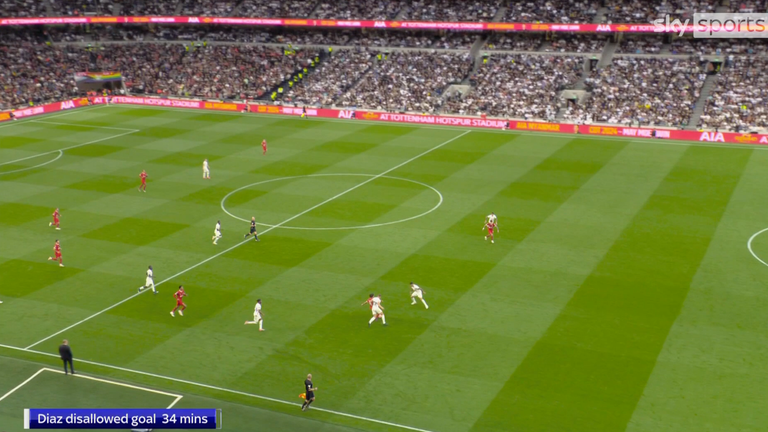
Image: Luis Diaz's goal was incorrectly disallowed for offside during Liverpool's defeat at Tottenham
Semi-automated offside is already used in the Champions League and Serie A, while not exactly the same system, it was also used at the World Cup in Qatar in 2022, with a chip embedded inside the matchday ball.
It was also used in the most recent Women’s World Cup and at December’s Club World Cup in Saudi Arabia, which was won by Manchester City. It will also feature at next summer’s European Championship in Germany.
The Premier League currently has VAR officials check offsides using Hawk-Eye but the system has faced heavy criticism for perceived errors and the time taken to come to a decision, while also leaving fans in the stadium in the dark with no replays.
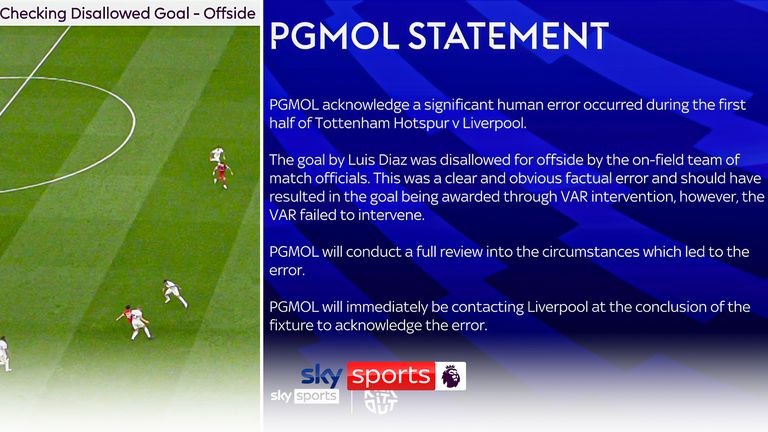
PGMOL acknowledged a significant human error with regards to Luis Diaz’s goal being disallowed for offside, as Gary Neville feels something doesn’t feel right with VAR at the moment.
The most high-profile error came when Luis Diaz was wrongly denied a goal for Liverpool at Tottenham.
Diaz was flagged offside after scoring but replays showed he was actually onside. However, VAR Darren England mistakenly believed the on-field decision had been to award the goal, leading him to tell referee Simon Hooper that the check was complete.
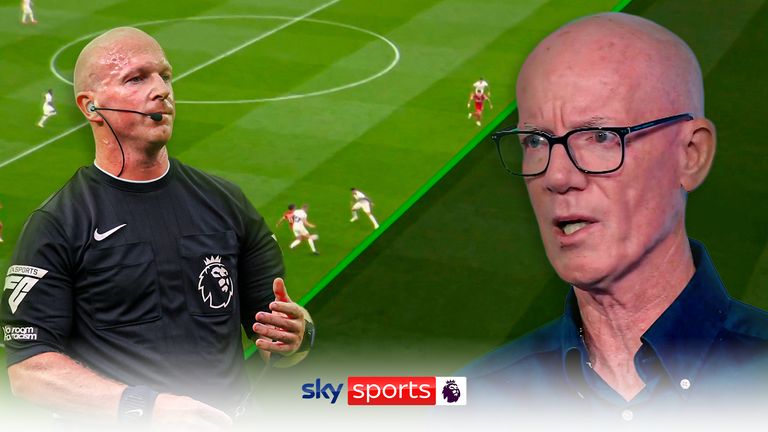
Dermot Gallagher said the decision to disallow Luis Díaz’s goal against Tottenham was a ‘very, very bad mistake’.
How does semi-automated offside technology work?
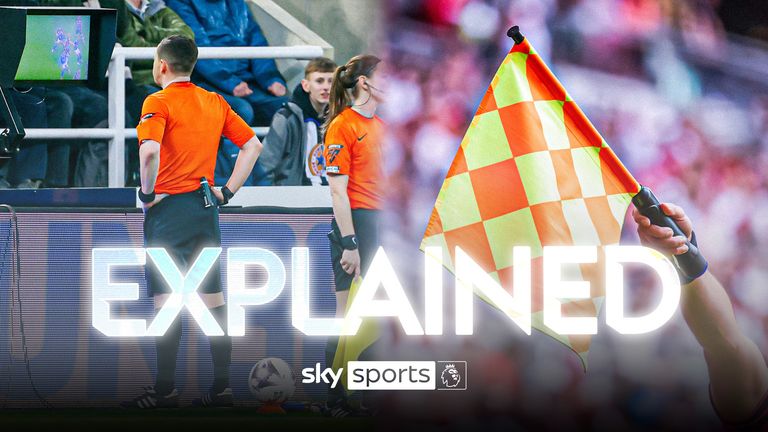
Semi-automated offside technology is coming to the Premier League next season and Sky Sports journalist Pete Smith explains all you need to know!
The system typically requires 12 cameras inside a stadium which track the ball and 29 data points on each player. Not all systems require a chip in the ball.
Decisions could be made in seconds and on average decisions are expected to be made 30 seconds quicker.
3D automated images will be shown on giant screens at stadiums.
The current system used by VAR will be used as back-up when semi-automated technology is not working, for instance when multiple bodies are obscuring the cameras.
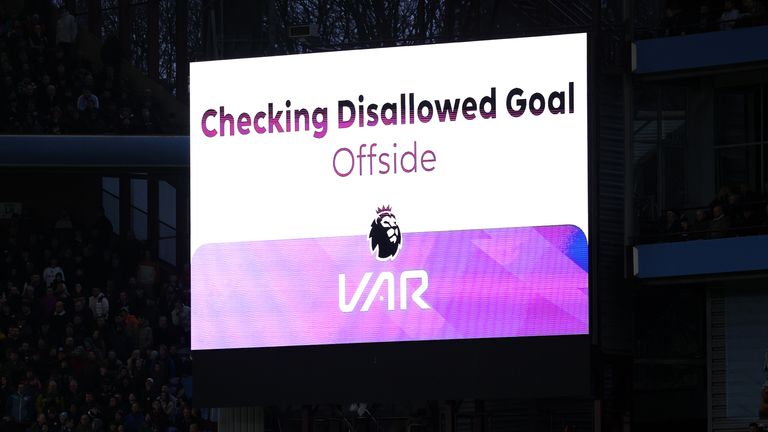
Image: Hawk-Eye system is currently used in the Premier League for offside decisions The longest VAR check in history…
Earlier this season, Burnley forward Jay Rodriguez thought he had grabbed a late equaliser against Bournemouth.
The linesman raised his flag, judging Rodriguez to be offside. The incident was then reviewed by VAR and replays showed just how tight an offside call it was.
VAR officials Michael Salisbury and Nick Hopton initially thought the linesman had made the wrong call so advised the decision should be overturned. However, after further inspection the VAR decided Rodriguez was marginally offside, so the goal was not allowed to stand.
The check lasted five minutes – making it the longest VAR check in Prem history, beating the previous record that stood at three minutes and 45 seconds, when David McGoldrick had a goal disallowed for Sheffield United against Tottenham in November 2019.
Semi-automated offside technology should help to avoid situations like this in the future.
How accurate is it?
The move should increase confidence in decision-making and increase the likelihood that no potential offsides are missed by the VAR.
Should the technology fail, manual crosshair placement will still be available as a back-up.
Referees will still need to make calls themselves on subjective elements, such as whether a player in an offside position is interfering with play, or whether a player is onside where a defensive player has touched the ball and the contact has been deemed deliberate.
Extensive testing and analysis of the new technology has been conducted this season, it is understood.
'SAOT will speed up decision-making'
Premier League Chief Football Officer Tony Scholes speaking about SAOT in February:
“We don’t believe it will improve the accuracy of decision-making. What it will do is speed up the time of decision-making. It’s extremely important in that regard.
“We are testing a couple of systems at the moment and we hope to be going to clubs for a decision later in the year. But that’s not a definite at the moment.
“It’s what we call the ‘edge cases’, where many things are occurring at once. You might have a lot of bodies in one place and it is the ability of the system to identify different parts of the body [that is of concern].
“For the vast majority of cases there won’t be an issue but in our competition we want to be clear that we are not introducing something that will give us problems in other areas.”
Analysis: New technology is a major step forward
Former Premier League referee Dermot Gallagher to Sky Sports on semi-automated offside technology ahead of its introduction at the World Cup in Qatar in 2022:
“I think the news is very exciting. When you see a major change like this, it brings a new dawn to football and a new way of playing. It’s going to bring accuracy, and as well as that it’s going to speed everything up, which is what everybody wanted.
“We’ve seen situations in the Champions League and the Premier League where very tough offsides took time due to the complexity of them.
“This will eliminate most of that, which has got to be a good thing. I think the referees will honestly embrace it. It’s so accurate and the problem with the VAR they currently have is the start point, which is when the ball is kicked.
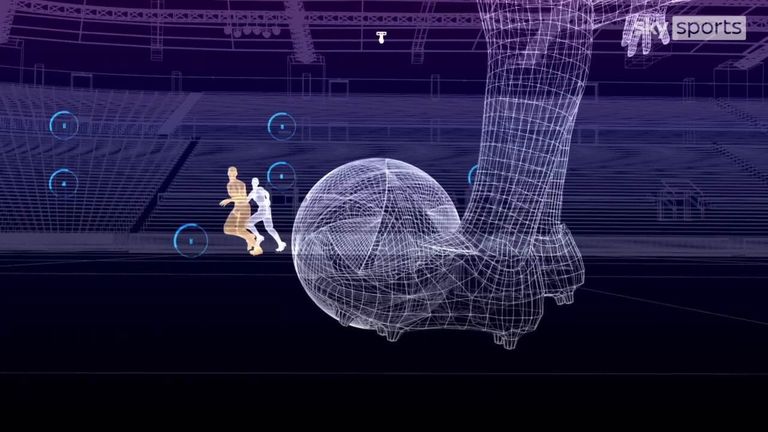
FIFA have confirmed that new semi-automated offside technology will be used at the Qatar World Cup.
“The ball then travels a long distance and you have to find out where the attacker is in relation to the defender and it takes time – we’ve seen that.
“This constantly tracks the ball and the player. It knows instantly at what point the ball is played and where the defender was in relation to the forward.
“In the 30-35 seconds it takes in the Premier League to decide if there’s an offside, that’s now going to be down to one second. It’s going to be projected quickly to the fans inside the stadium, which eliminates the doubt in their minds quickly. It’s a major step forward.”
Collina: SAOT can take us a step further
Chair of FIFA referees committee Pierluigi Collina discussing SAOT before its introduction at the World Cup in 2022:
“VAR has already had a very positive impact on football and we can see that the number of major mistakes has already been dramatically reduced. We expect that semi-automated offside technology can take us a step further. We are aware that sometimes the process to check a possible offside takes too long, especially when the offside incident is very tight. This is where semi-automated offside technology comes in – to offer faster and more accurate decisions.
“The testing has been a major success and we are very confident that, in Qatar, we will have a very valuable support tool to help referees and assistant referees make the best and most correct decision on the field of play. I know that someone called it ‘robot offside’; it’s not. The referees and the assistant referees are still responsible for the decision on the field of play.”
Sourse: skysports.com






